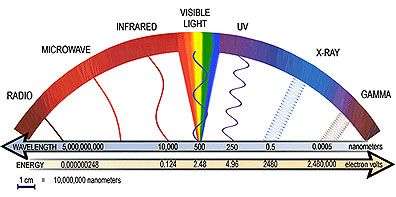To achieve the desired test conditions in a constant temperature and humidity test chamber, it is inevitable to perform humidification and dehumidification operations. This article analyzes the various methods commonly used in Labcompanion constant temperature and humidity test chambers, highlighting their respective advantages, disadvantages, and recommended conditions for use.
Humidity can be expressed in many ways. For test equipment, relative humidity is the most commonly used concept. Relative humidity is defined as the ratio of the partial pressure of water vapor in the air to the saturation vapor pressure of water at the same temperature, expressed as a percentage.
From the properties of water vapor saturation pressure, it is known that the saturation pressure of water vapor is solely a function of temperature and is independent of the air pressure in which the water vapor exists. Through extensive experimentation and data organization, the relationship between water vapor saturation pressure and temperature has been established. Among these, the Goff-Gratch equation is widely adopted in engineering and metrology and is currently used by meteorological departments to compile humidity reference tables.

Humidification Process
Humidification essentially involves increasing the partial pressure of water vapor. The earliest method of humidification was to spray water onto the chamber walls, controlling the water temperature to regulate the surface saturation pressure. The water on the chamber walls forms a large surface area, through which water vapor diffuses into the chamber, increasing the relative humidity inside. This method emerged in the 1950s.
At that time, humidity control was primarily achieved using mercury contact conductivity meters for simple on-off regulation. However, this method was poorly suited for controlling the temperature of large, lag-prone water tanks, resulting in long transition processes that could not meet the demands of alternating humidity tests requiring rapid humidification. More importantly, spraying water onto the chamber walls inevitably led to water droplets falling on the test samples, causing varying degrees of contamination. Additionally, this method posed certain requirements for drainage within the chamber.
This method was soon replaced by steam humidification and shallow water pan humidification. However, it still has some advantages. Although the control transition process is lengthy, the humidity fluctuations are minimal once the system stabilizes, making it suitable for constant humidity tests. Furthermore, during the humidification process, the water vapor does not overheat, thus avoiding the addition of extra heat to the system. Additionally, when the spray water temperature is controlled to be lower than the required test temperature, the spray water can act as a dehumidifier.
Development of Humidification Methods
With the evolution of humidity testing from constant humidity to alternating humidity, there arose a need for faster humidification response capabilities. Spray humidification could no longer meet these demands, leading to the widespread adoption and development of steam humidification and shallow water pan humidification methods.
Steam Humidification
Steam humidification involves injecting steam directly into the test chamber. This method offers rapid response times and precise control over humidity levels, making it ideal for alternating humidity tests. However, it requires a reliable steam source and can introduce additional heat into the system, which may need to be compensated for in temperature-sensitive tests.
Shallow Water Pan Humidification
Shallow water pan humidification uses a heated water pan to evaporate water into the chamber. This method provides a stable and consistent humidity level and is relatively simple to implement. However, it may have slower response times compared to steam humidification and requires regular maintenance to prevent scaling and contamination.
Dehumidification Process
Dehumidification is the process of reducing the partial pressure of water vapor in the chamber. This can be achieved through cooling, adsorption, or condensation methods. Cooling dehumidification involves lowering the temperature of the chamber to condense water vapor, which is then removed. Adsorption dehumidification uses desiccants to absorb moisture from the air, while condensation dehumidification relies on cooling coils to condense and remove water vapor.
Conclusion
In summary, the choice of humidification and dehumidification methods in constant temperature and humidity test chambers depends on the specific requirements of the tests being conducted. While older methods like spray humidification have their advantages, modern techniques such as steam humidification and shallow water pan humidification offer greater control and faster response times, making them more suitable for advanced testing needs. Understanding the principles and trade-offs of each method is crucial for optimizing test chamber performance and ensuring accurate and reliable results.








